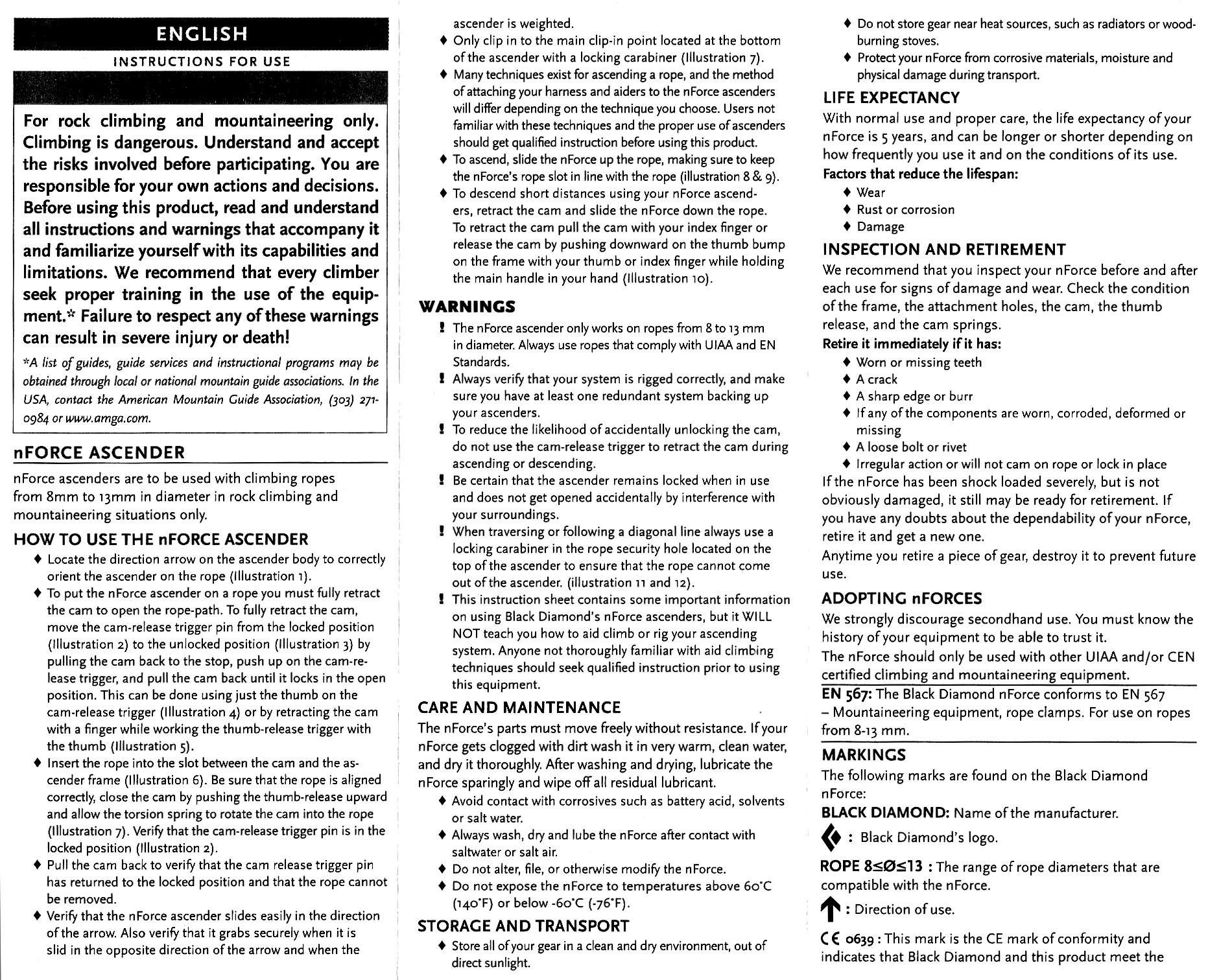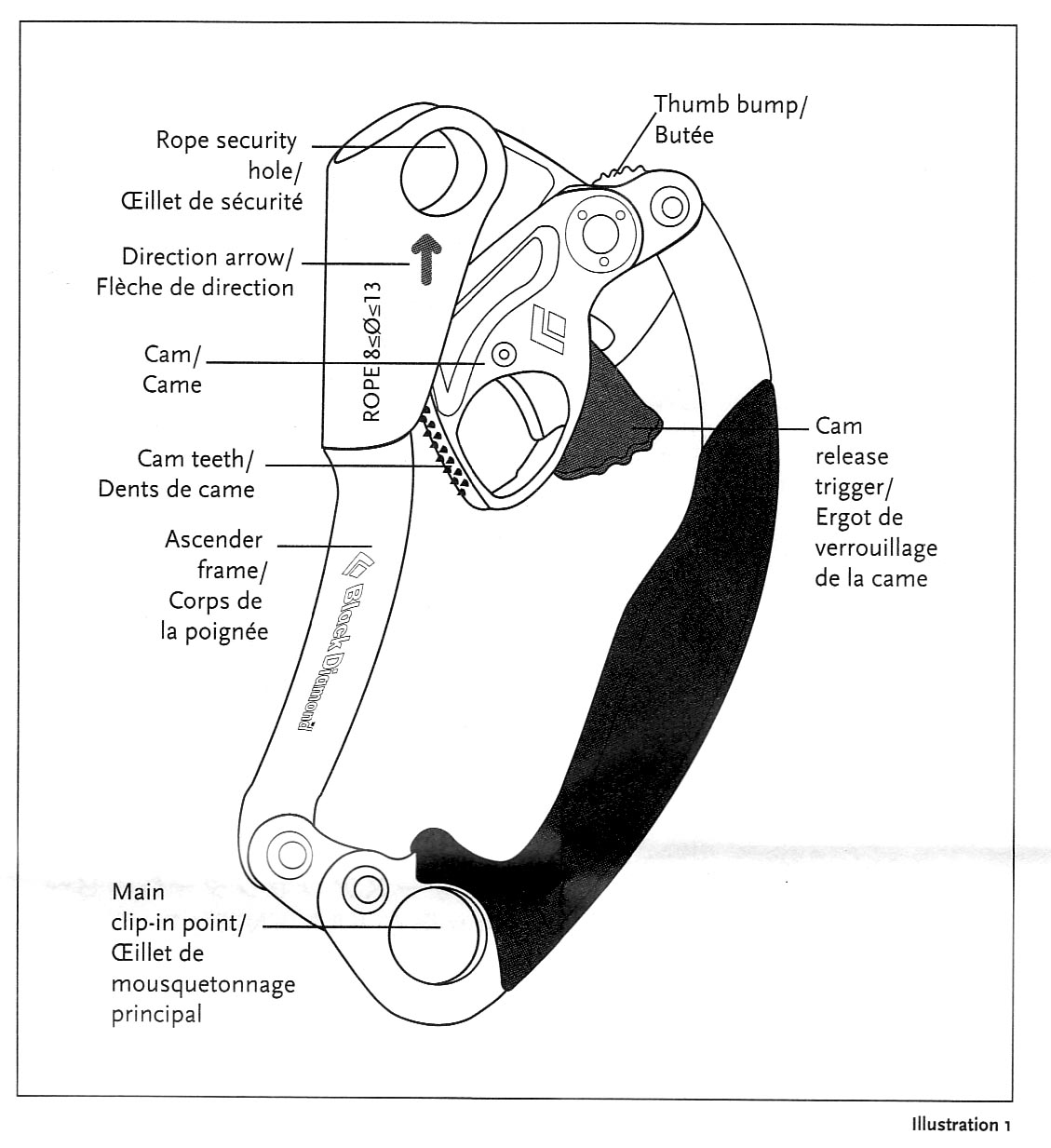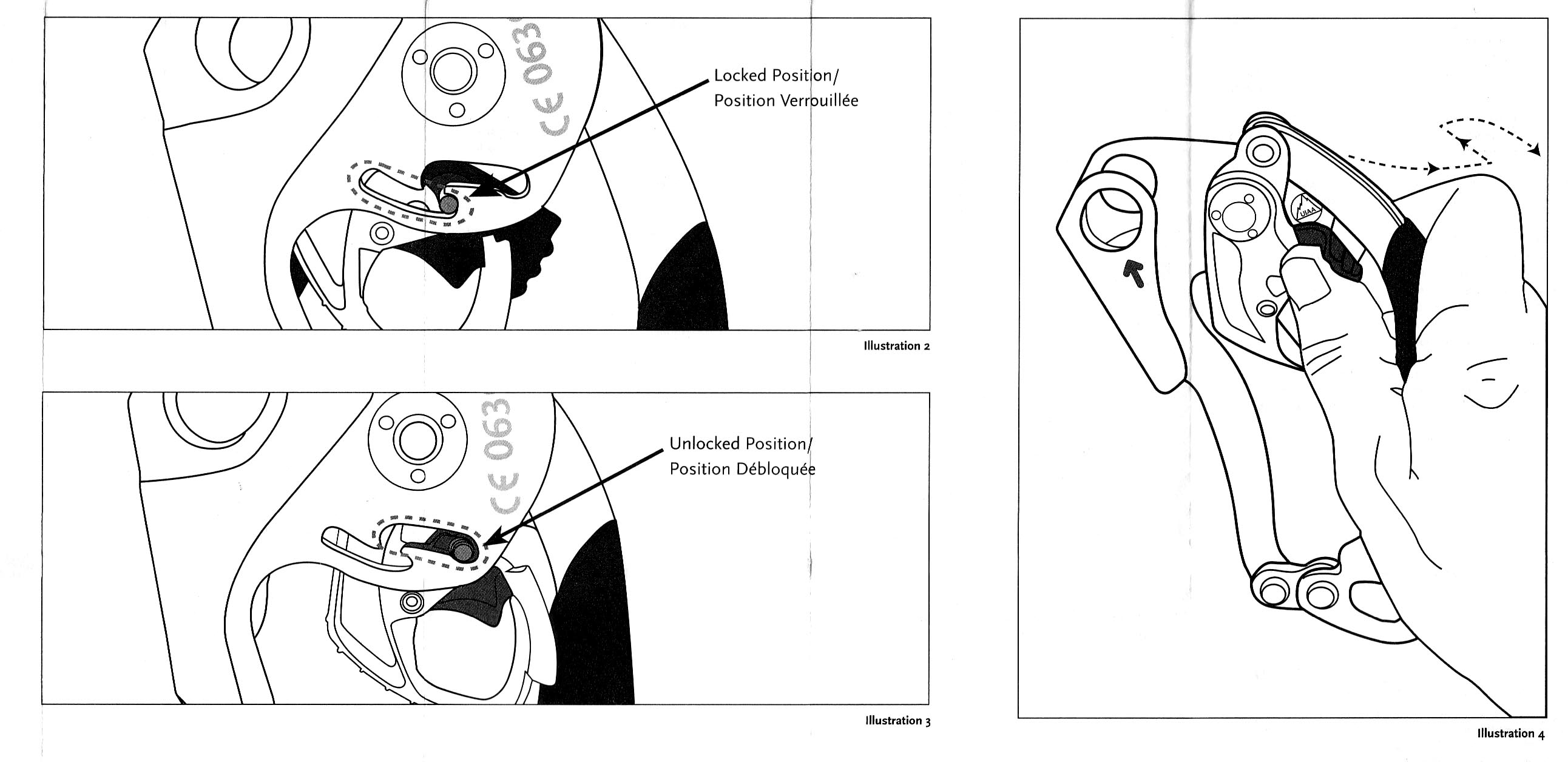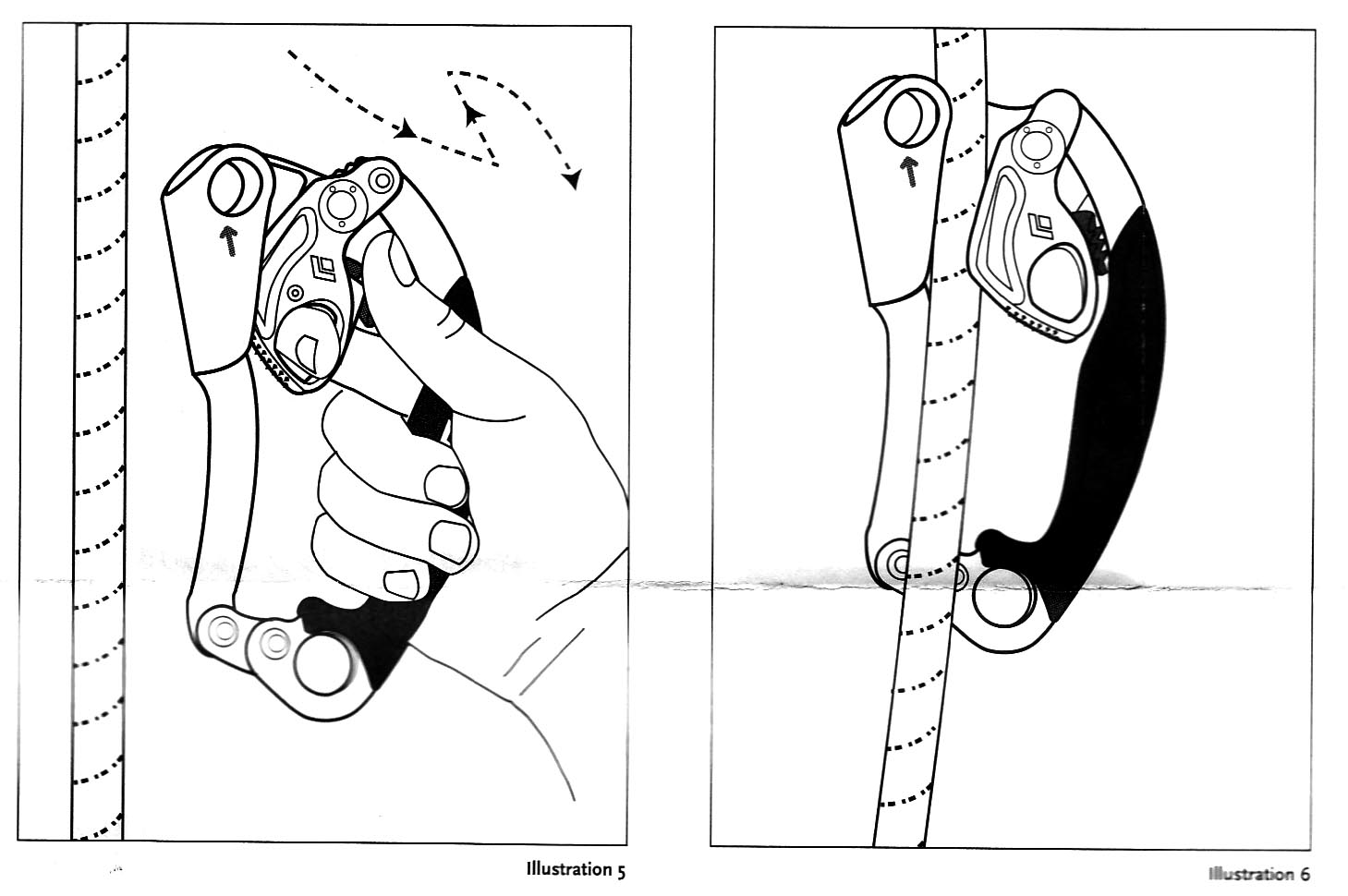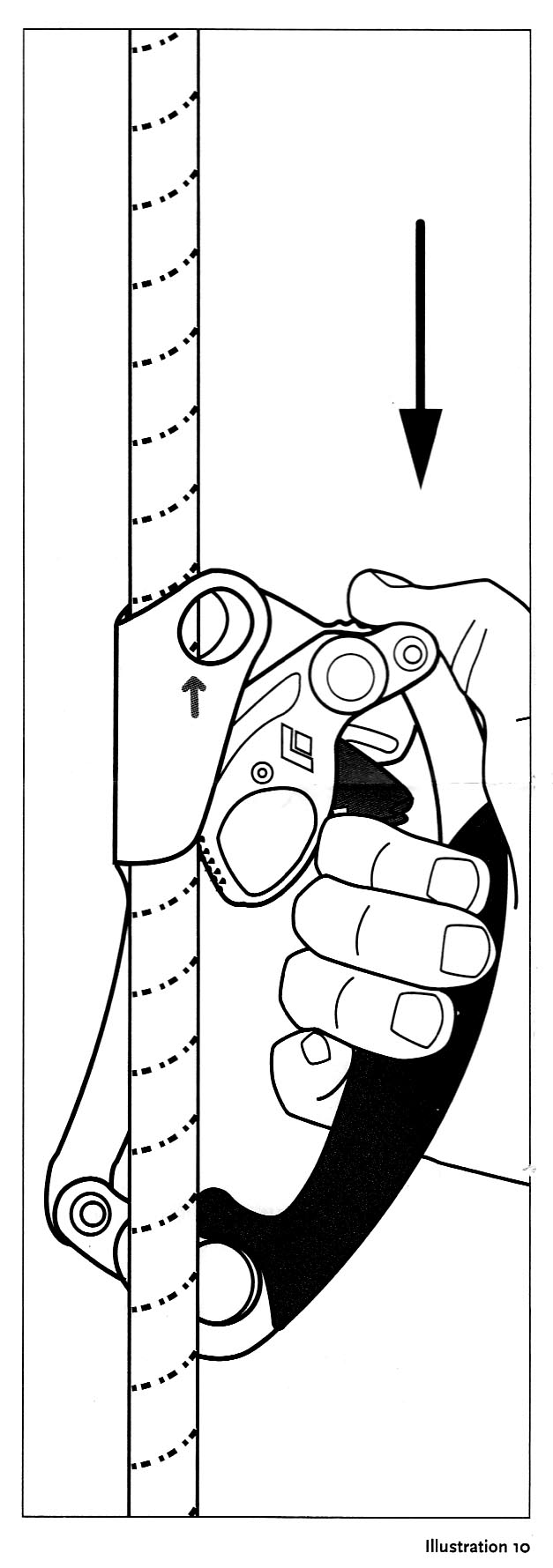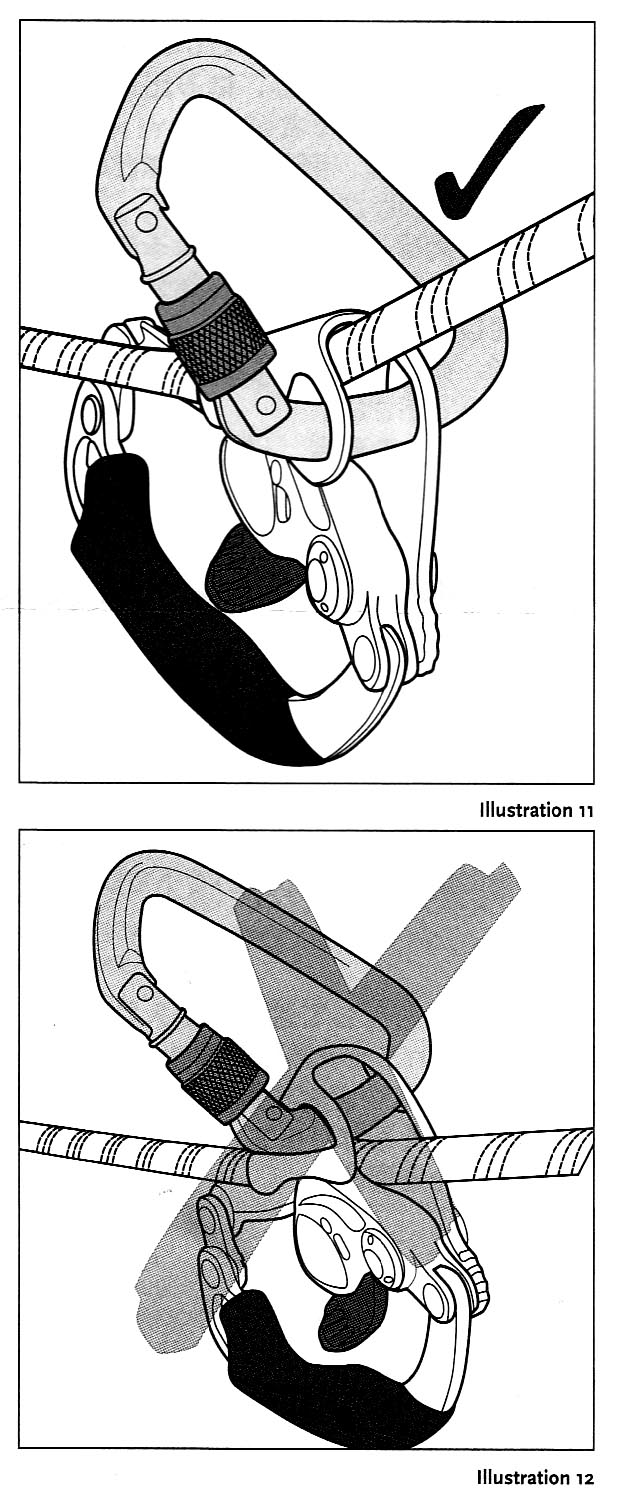Technical Details
I acquired this pair of ascenders from Mountain Gear in 2007. I acquired another pair in 2017 as part of Bob Thrun’s collection.
The Black Diamond nForce is 194 mm. tall, 105 mm. wide, 33 mm. thick, and weighs 182 g.
The Black Diamond nForce ascender shell consists of a number
of parts. The main piece is an anodized 4 mm. aluminum stamping
which forms the rope channel, the upper portion of the ascender,
and the front strap on the side of the hand hole opposite the
hand grip. A reinforcing rib stamped into this piece reinforces
the rope channel and front strap. A 16 by 19 mm. hole
through the top part of the rope channel provides an upper sling
attachment point.
The cam is mounted on the upper shell using a special 8 mm.
shoulder bolt and special nut. The nut is center punched on the
back side of the ascender to keep the bolt from unscrewing. A
cam spring mounted on this bolt tends to close the cam. This spring
is not visible without disassembling the ascender. The cam is
a plated steel casting. The cam face is concave and has conical
teeth in a (2.3)(4.3)^6 pattern. There is a large finger hole
in the cam which allows one to pivot the cam safety, and an extension
on the back of the cam finger hole provides a comfortable surface
for fingering the cam. The cam extends past the pivot to a second
pivot pin located about 18 mm. from the main pivot. A second "L"
shaped 4 mm. aluminum frame piece extends downwards from this
pivot, forming the hand grip side and bottom of the hand hole.
A well rounded 19.8 mm. hole at the bottom of this piece forms
the main sling attachment point. This piece has a rubberized hand
grip molded onto it.
The bottom of the main shell and the bottom of the "L"
shaped piece are connected by a short, curved piece of 4 mm. aluminum.
This piece is connected to the other two by one rivet each. The
rivets are set loosely so the connections are free to rotate.
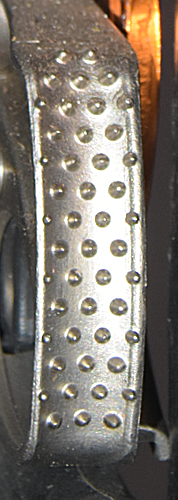 The cam and three frame pieces form a quadrilateral where all
four corners are free to rotate. As a result, raising the hand
grip raises the end of the cam opposite the rope, thus lowering
the end near the rope and pivoting the cam open. During this operation,
the hand grip ("L" shaped piece) moves upwards with
respect to the main frame piece. The cam spring opposes this motion,
so it acts to raise the main shell. At first friction against
the rope prevents this and the cam starts to open, but eventually
the cam no longer has enough friction on the rope, and the ascender
moves upwards. When weight is applied, the cam spring acts to
close the cam, and this action coupled with the climber’s weight
moves the "L" shaped piece downwards. The climbers weight
is transferred to the cam by the "L" shaped piece. The
cam exerts enough normal force on the rope to prevent sliding,
and the climbers weight is held.
The cam and three frame pieces form a quadrilateral where all
four corners are free to rotate. As a result, raising the hand
grip raises the end of the cam opposite the rope, thus lowering
the end near the rope and pivoting the cam open. During this operation,
the hand grip ("L" shaped piece) moves upwards with
respect to the main frame piece. The cam spring opposes this motion,
so it acts to raise the main shell. At first friction against
the rope prevents this and the cam starts to open, but eventually
the cam no longer has enough friction on the rope, and the ascender
moves upwards. When weight is applied, the cam spring acts to
close the cam, and this action coupled with the climber’s weight
moves the "L" shaped piece downwards. The climbers weight
is transferred to the cam by the "L" shaped piece. The
cam exerts enough normal force on the rope to prevent sliding,
and the climbers weight is held.
The cam safety is a bent tab mounted on the cam with a 3 mm.
solid rivet. A small coil spring pushes the safety downwards.
A pin on the rear of the safety engages a zig-zag slot cut in
the main frame piece. Under normal operation the cam safety pin
follows the lower slot of the zig-zag, thus limiting the amount
the cam can open. By pushing up on the thumb knob, the pin enters
the upper slot of the zig-zag and the cam can open. A notch in
the rear of the upper zig-zag provides a hold-open lock.
The front of the main shell piece is stamped with an up-pointing
arrow, "ROPE 8≤Ø≤13," the
UIAA and Black Diamond logos, and "Black Diamond" in
raised letters. The rear is stamped "CE 0639" and "7038.
The hand grip has the Black Diamond logo molded in each side.
Black diamond clearly copied some of the old Kong-Bonaiti
ideas when they developed the nForce, and I'm not really sure
why they chose to do so. Like the Kong-Bonaiti,
the nForce operates on an entirely different set of principles
than handled eccentric cam ascenders. The moving frame takes some
time to get used to if you are accustomed to other handled ascenders.
One disadvantage is that this ascender is more difficult to push
up the rope, particularly if the rope is hanging against a wall
with one’s weight on it. This situation can often be avoided by
proper pit rigging. This ascender gives a little more lost motion
than normal handled eccentric cam ascenders.
I see two main reasons for this. The first is the pivoting action
of the handle. The other is that the sling attachment point is
located farther from the main rope, so the ascender cants away
from the vertical with each step.
On the other hand, the lever cam design is less sensitive to
rope conditions than eccentric cam designs. In particular, the
nForce can be expected to hold under some mud and ice conditions
where the handled eccentric cam ascenders
ascenders slip.
The workmanship on this ascender appears to be quite good,
and the construction is solid. All frame edges are rounded. The
sheet metal shell has the same potential bending problem as all
other sheet metal shells discussed in this site, but at least
the nForce used heavy 4 mm. for the frame and reinforced
it well. The riveted joints are probably the weak point. The sling
attachment holes could have the same safety problem described
for the Clog Expedition ascenders.



